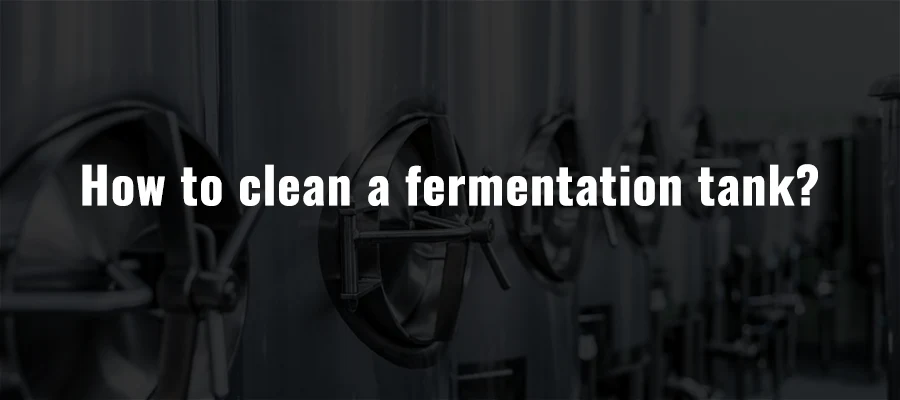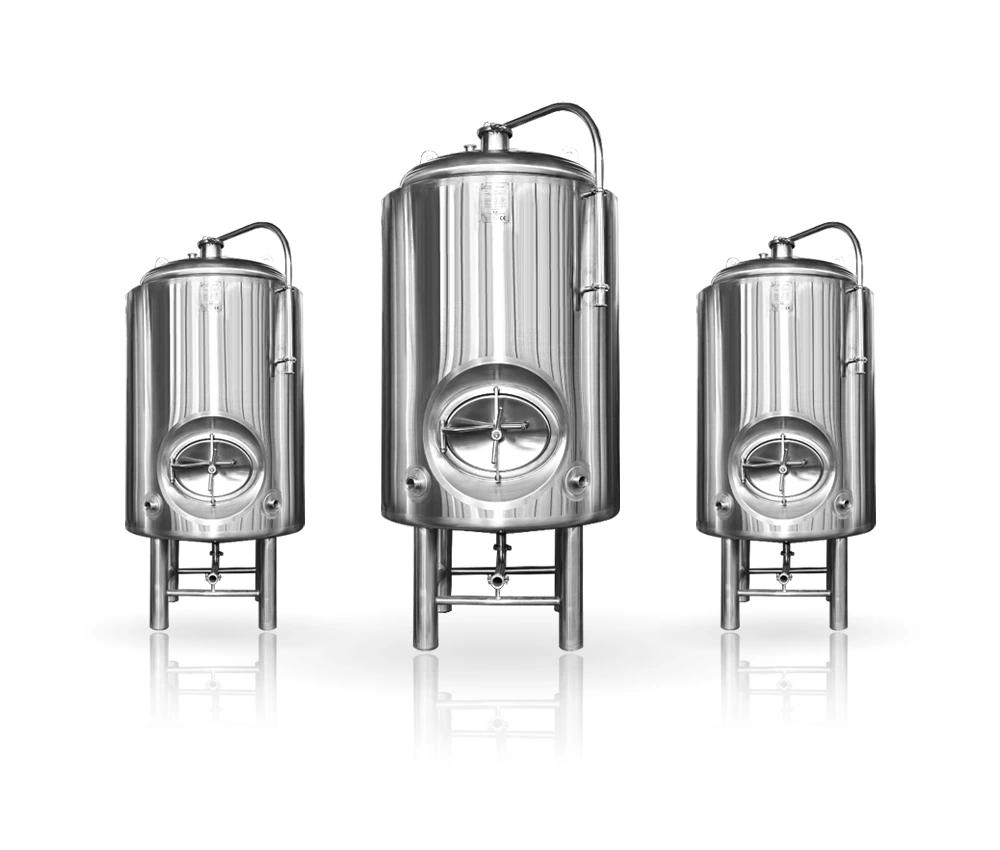The dirt on the walls of the fermentation tank is a mixture of inorganic and organic matter, which is difficult to clean with a single cleaning agent. If only caustic soda is used for fermenter cleaning, it only serves to remove organics. Only when the cleaning temperature reaches above 80 ℃, can the cleaning effect be better. When cleaning, single nitric acid is used for cleaning, which only has a certain effect on inorganic substances and is almost ineffective on organic substances. So, fermenter cleaning requires an alkaline cleaning solution and an acidic cleaning solution. Fermentation tanks are cleaned first and then sterilized. The prerequisite for effective sterilization is that the dirt is cleaned. In actual production operations, it is always cleaned first and then sterilized.
Cleaning Steps For Fermentation Tanks
Drain the residual carbon dioxide gas in the tank. Compressed air displaces carbon dioxide for 10-15 minutes (depending on the compressed air flow).
The yeast remaining in the fermenter was rinsed with clean water, and the fermenter was rinsed with hot water at 90°C to warm it up. Disassemble the discharge combination valve and aseptic sampling valve, use a special brush dipped in lye to clean it, and reinstall it.
Circulate the fermenter with 1.5-2% hot alkaline water above 80°C for 30 to 60 minutes. Rinse the fermentation tank with hot or warm water to make the discharge liquid neutral, and rinse the fermentation tank with cold water to room temperature.
Use a nitric acid solution with a concentration of 1% to 2% or an acidic cleaning solution for 15 minutes.
The fermenter was rinsed with water to neutralize the drain.
Sterilization Of Fermentation Tanks
Use 1:200-250 ratio of peracetic acid diluent or hydrogen peroxide of suitable concentration to circulate and clean for 30 minutes, recover peracetic acid diluent, and seal the fermentation tank for use. During the whole cleaning process, make the fermentation tank with positive pressure: 0.01-0.04Mp. It is believed that through strict cleaning and disinfection work, the stability of your brewed beer will be further improved.
Why Clean And Then Sanitize
First, the dirt is cleaned, and the rest is bacteria, and then the surface of the bacteria can be completely contacted with the bactericide, and then the bacteria are killed. Otherwise, there is dirt, and it is difficult for the bactericide to contact some bacterial surfaces, which may cause the rancidity of the next bottle of wine. So, the prerequisite for effective sterilization is that the dirt is cleaned. In actual production operations, it is always cleaned first and then sterilized.
Brew Clever!
Fermentation is one of the key parts of brewing. Even in the humblest home-based brewery, the fermentation tank is an essential part.
It doesn’t matter whether they are made of synthetical material or stainless steel, with pressure or without, cylindrical, conical or oval: Micet Group has the right container for every purpose.
Did you know: By increasing your fermentation capacity you can efficiently increase your brewing capacity?
We have fermenters ranging in sizes from 50L – 300HL and and manufactured to suit your brewing needs.
Common Problems Encountered In Fermentation Tank Cleaning
The fermentation process will produce a large amount of protein, hop resin, polysaccharide, yeast, and other organic substances and calcium oxalate, sulfate, and other inorganic substances. After the fermenter is emptied, organic and inorganic dirt adheres to the tank walls and is yellowish-brown. When the amount of tartar is large, the surface appears white, like the epidermis of the saline-alkali ground, the inorganic and organic matter are intertwined with each other.
The use of caustic soda in cleaning only affects removing organic matter, and the chemical reaction speed is increased by about 1.5 times when the temperature is increased by about 10 °C, so small fermentation tanks are generally cleaned with hot alkali.
When cleaning, a single nitric acid or acid cleaning agent is used for cleaning, which only has a certain effect on inorganic substances and is almost ineffective on organic substances. The contamination on the wall of the fermentation tank is a mixture of inorganic and organic substances, which is difficult to clean with a single cleaning agent. So, an alkaline cleaning solution and an acidic cleaning solution are required to be used together.





